Abstract
ABSTRACT In a study of vibration-induced white finger (VWF) 39 chain saw operators, being representative of 365 lumberjacks according to a completed questionnaire, underwent clinical investigation. In a medical interview 13 of the 39 had VWF and 26 were without finger symptoms. In the subjects with VWF both hands were equally affected, the third and fourth finger most frequently; the thumbs were always normal. A cold provocation test, measuring the finger systolic blood pressure with a cuff technique during combined body cooling and finger cooling to 30, 15, and 6°C, was applied to the 39 chain saw operators and to 20 age-matched outdoor workers who had not used vibrating hand tools. The finger most often showing Raynaud's phenomenon was cold provoked, and a non-affected finger was used as a reference. The systolic pressure gradient measured at 30°C from the upper arm to the cooled finger was increased in the chain sawyers most severely affected by VWF compared with the control group and with the chain sawyers without VWF (p <0·02). Raynaud's phenomenon was verified by digital arterial closure (zero pressure in the finger) at 15 or 6°C in 12 of 13 chain sawyers having anamnestic and clinical evidence of VWF. Chain sawyers without VWF had an increased digital arterial response to cold at 15 and 6°C compared with the control group (p <0·05) and had a decreased cold response compared with chain sawyers with VWF (p <0·05). In chain sawyers without VWF 13 subjects with an exposure period of 10-23 years had an increased cold response at 6°C compared with 13 subjects with an exposure period of one to three years (p <0·05). Only one of 38 chain saws did not exceed the exposure limit proposed by the International Standardisation Organisation. The results of the present study indicate that vibrations induce hyperresponsiveness to cold in the exposed arteries, even in chain sawyers without finger symptoms. The exposure to vibration therefore should be reduced to eliminate this damage. The presented cold provocation test may be used to diagnose Raynaud's phenomenon and to disclose an abnormal digital arterial cold response before subjective symptoms have appeared.
Full text
PDF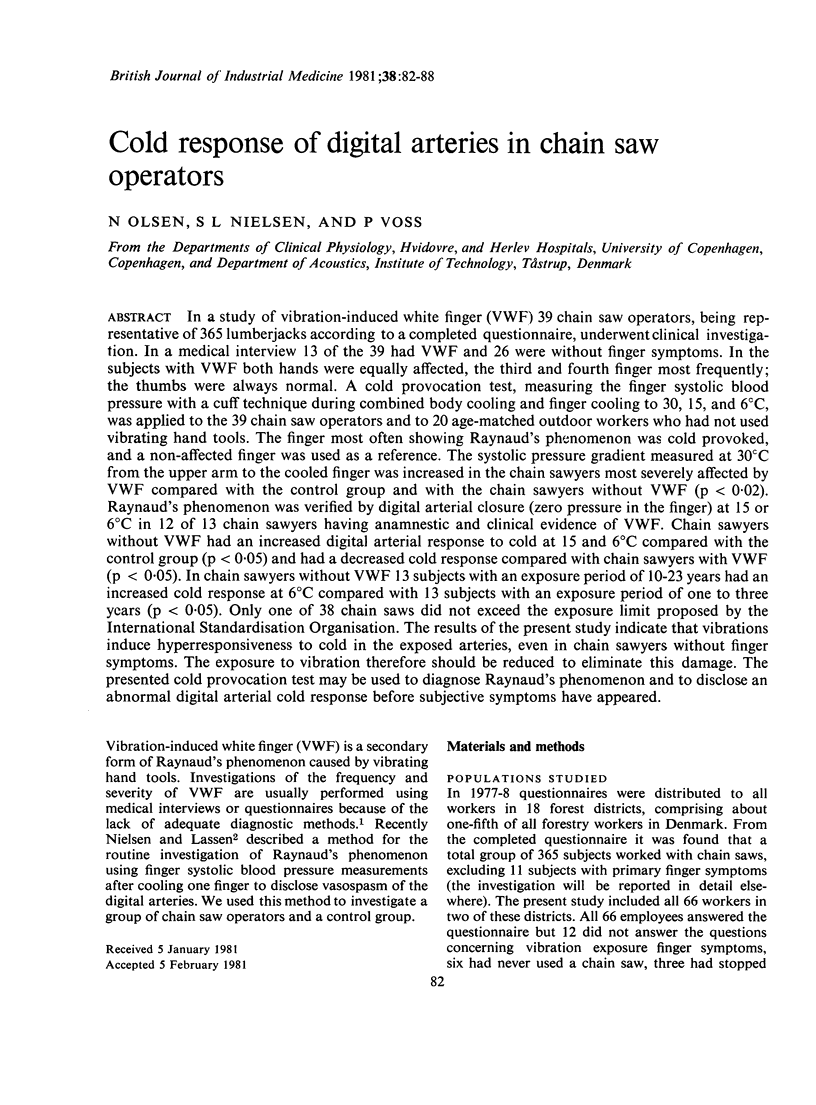
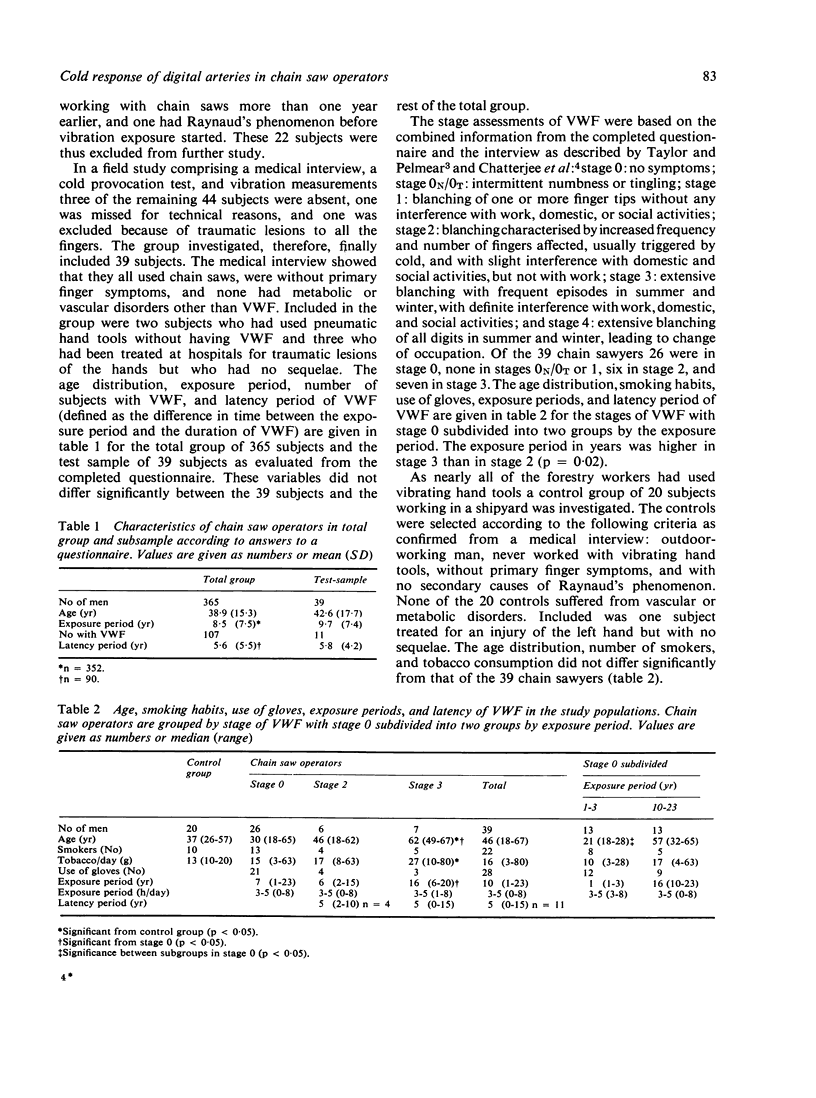
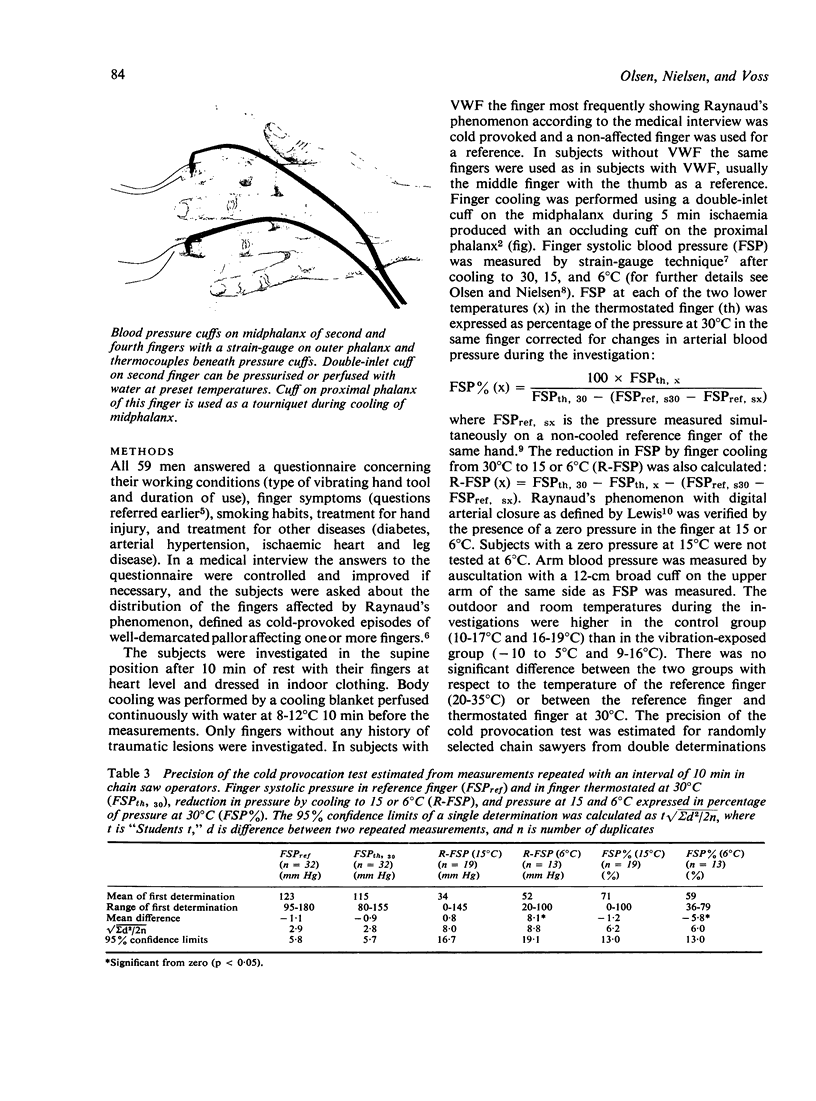
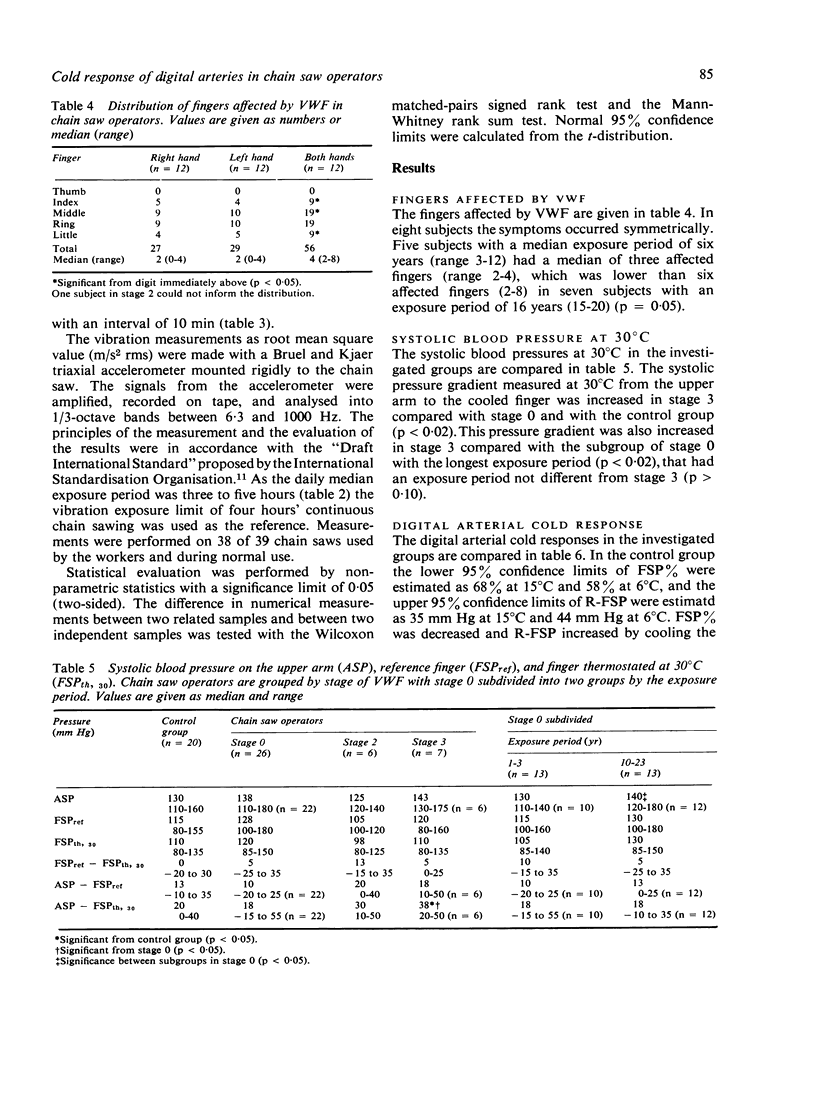
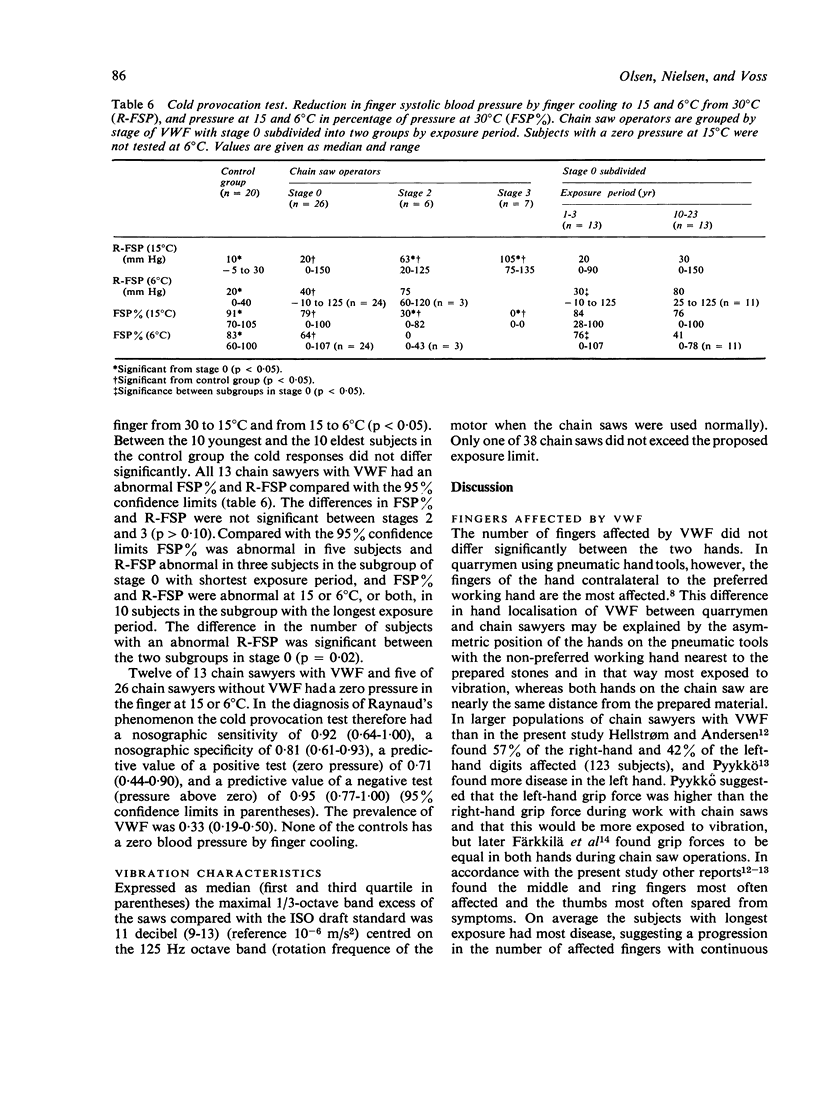

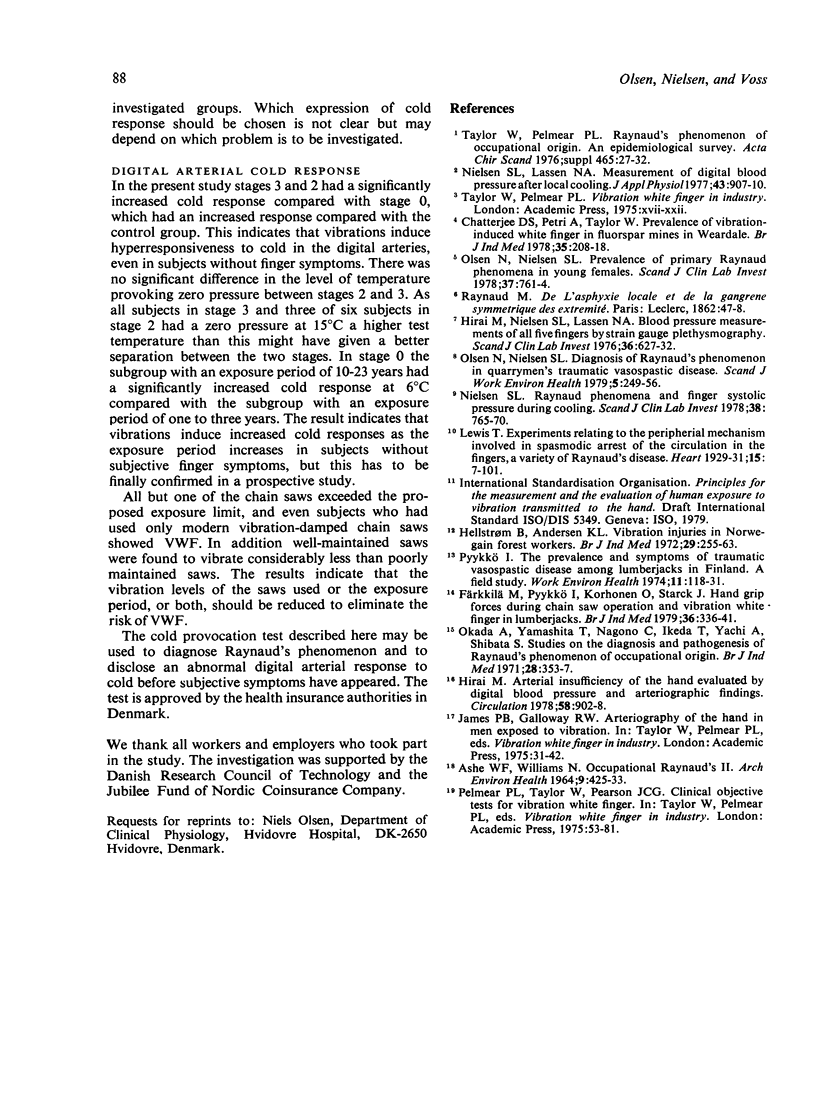
Images in this article
Selected References
These references are in PubMed. This may not be the complete list of references from this article.
- ASHE W. F., WILLIAMS N. OCCUPATIONAL RAYNAUD'S. II. FURTHER STUDIES OF THIS DISORDER IN URANIUM MINE WORKERS. Arch Environ Health. 1964 Oct;9:425–433. doi: 10.1080/00039896.1964.10663861. [DOI] [PubMed] [Google Scholar]
- Chatterjee D. S., Petrie A., Taylor W. Prevalence of vibration-induced white finger in fluorspar mines in Weardale. Br J Ind Med. 1978 Aug;35(3):208–218. doi: 10.1136/oem.35.3.208. [DOI] [PMC free article] [PubMed] [Google Scholar]
- Färkkilä M., Pyykkö I., Korhonen O., Starck J. Hand grip forces during chain saw operation and vibration white finger in lumberjacks. Br J Ind Med. 1979 Nov;36(4):336–341. doi: 10.1136/oem.36.4.336. [DOI] [PMC free article] [PubMed] [Google Scholar]
- Hellstrom B., Andersen K. L. Vibration injuries in Norwegian forest workers. Br J Ind Med. 1972 Jul;29(3):255–263. doi: 10.1136/oem.29.3.255. [DOI] [PMC free article] [PubMed] [Google Scholar]
- Hirai M. Arterial insufficiency of the hand evaluated by digital blood pressure and arteriographic findings. Circulation. 1978 Nov;58(5):902–908. doi: 10.1161/01.cir.58.5.902. [DOI] [PubMed] [Google Scholar]
- Hirai M., Nielsen S. L., Lassen N. A. Blood pressure measurement of all five fingers by strain gauge plethysmography. Scand J Clin Lab Invest. 1976 Nov;36(7):627–632. doi: 10.1080/00365517609054487. [DOI] [PubMed] [Google Scholar]
- Nielsen S. L., Lassen N. A. Measurement of digital blood pressure after local cooling. J Appl Physiol Respir Environ Exerc Physiol. 1977 Nov;43(5):907–910. doi: 10.1152/jappl.1977.43.5.907. [DOI] [PubMed] [Google Scholar]
- Nielsen S. L. Raynaud phenomena and finger systolic pressure during cooling. Scand J Clin Lab Invest. 1978 Dec;38(8):765–770. doi: 10.1080/00365517809104885. [DOI] [PubMed] [Google Scholar]
- Okada A., Yamashita T., Nagano C., Ikeda T., Yachi A., Shibata S. Studies on the diagnosis and pathogenesis of Raynaud's phenomenon of occupational origin. Br J Ind Med. 1971 Oct;28(4):353–357. doi: 10.1136/oem.28.4.353. [DOI] [PMC free article] [PubMed] [Google Scholar]
- Olsen N., Nielsen S. L. Prevalence of primary Raynaud phenomena in young females. Scand J Clin Lab Invest. 1978 Dec;38(8):761–764. doi: 10.1080/00365517809104884. [DOI] [PubMed] [Google Scholar]
- Pyykkö I. The prevalence and symptoms of traumatic vasospastic disease among lumberjacks in Finland. A field study. Work Environ Health. 1974;11(2):118–131. [PubMed] [Google Scholar]
- Taylor W., Pelmear P. L. Raynaud's phenomenon of occupational origin. An epidemiological survey. Acta Chir Scand Suppl. 1976;465:27–32. [PubMed] [Google Scholar]



